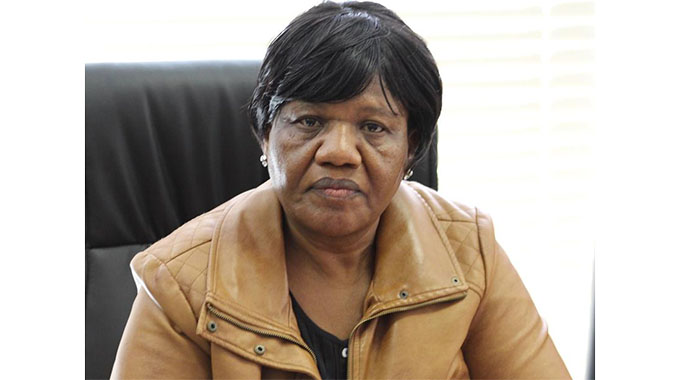Growth of health sector under the New Dispensation

Grace Zvavamwe
Correspondent
Since the coming in of the New Dispensation, the economic climate in Zimbabwe has been improving tremendously.
The New Dispensation, operating under the engagement and re-engagement policy initiative has made noticeable progress in the revival of the health sector.
Recently, Government commissioned state-of-the-art medical equipment worth US$12 million procured through co-operation from United Nations (UN), the African Development Bank, China and Japan which is expected to revolutionise the country’s health delivery system.
Contrary to falsehoods on the state-of-affairs in the country, Government continues to strike partnerships through the re-engagement and engagement initiative aimed at improving the operations of the health sector.
The commissioning of medical equipment is a testimony to the partnerships that Government has been pursuing to advance the achievements under National Development Strategy 1 (NDS1) and the National Health Strategy which prioritises the provision of adequate medical equipment.
Thus, creating a favourable environment for the health sector to thrive and accelerate the attainment of a prosperous and empowered upper middle-income society by 2030.
The equipment, which was procured included X-ray machines, bedside monitors, defibrillators, ventilators, stretcher beds, eight tonne-refrigerated service trucks, wheelchairs, and 44-seater-service buses among others.
This comes as a benefit as the development and advancement of medical equipment is a crucial factor to a country’s progress and growth in the healthcare sector. The new medical equipment allows for early detection, accurate diagnosis, and effective treatment of various illnesses and diseases.
This enhances the overall quality of healthcare services, leading to an improved health outcome for the general citizens of Zimbabwe.
Modern medical equipment increases the efficiency of healthcare delivery, which significantly reduces the cost of treatment and increases the accessibility of medical care to a broader range of society.
Additionally, this advancement in medical technology creates new jobs and industries and stimulates the country’s economic growth.
The manufacturing and distribution of medical equipment require an extensive network of suppliers, manufacturers, and distributors, generating employment opportunities and creating a ripple effect in other sectors of the economy.
This development and advancements by Government in the medical technology provide the country with a competitive advantage, encouraging foreign investment and expanding its global market share.
Furthermore, the US$12 million equipment is just the tip of the iceberg of what the Second Republic has achieved since the start of its tenure.
There are many things which are worthy to note which have been accomplished under its administration.
Ensuring that the country had a functional emergency medical service, the Government invested towards improving services at all central, provincial, district hospital and clinics across the country.
Recently, Government acquired 18 brand new helicopters from Russia that will go toward emergency air medical services. This will go a long way in improving the service delivery of our health sector as many lives will be saved.
In 2018, the Second Republic invested in the construction of the United Bulawayo Hospitals (UBH).
The laboratory at UBH is one of the largest laboratories in the country which by far has improved the provision of services for people in Bulawayo and Matabeleland regions.
To date, UBH has managed to re-introduce laparoscopy and hip surgeries following the acquisition of the new theatre equipment and accessories.
Whereas before, people used to travel outside the country for these types of surgeries.
We have also witnessed great development in health sector through infrastructure development which is the mandate of the Second Republic in ensuring health coverage.
Hospitals all around the country are being constructed all around the country in line with the motto ‘leaving no one and no place behind.
The construction of the health centres is yet another remarkable strategy by the Government set to improve access to health services for most communities.
In the Matabeleland region, Ekusileni Health Care centre was reopened in 2021, thanks to the late Vice President Dr Joshua Nkomo.
It had been closed due to obsolete equipment. The closure of that hospital had left residents enduring long distances for them to access medical treatment.
This had increased the mortality rate in that area hence the revival of the centre was a saving grace to most as people could quickly access medical assistance.
As of this year, the outpatient department, male and female wards at Muduvuri Pan African Hospital were constructed.
On top of that, there are four other health centres at various stages of completion which include Stoneridge in Harare, Cowdry Park in Bulawayo, Mataga growth point in Mberengwa and Runyararo health centre in Chimanimani.
The Second Republic has managed to inject funds and resuscitate and construct these facilities. The construction of these facilities has been a beacon of hope in the healthcare service delivery system. Through this development, people can now access services closer to where they stay as envisioned by the Second Republic.
There have also been legislative reforms with Zimbabwe making progress in decriminalisation of wilful transmission of Human Immune Virus (HIV) as part of efforts to end the stigma and discrimination surrounding the virus.
There also has been significant progress in fighting malaria morbidity, HIV prevalence and attaining the World Health Organisation (WHO) standard for tuberculosis (TB) treatment success rate.
However, critics such as Hopewell Chin’ono, who have an inclination to spread falsehoods and vilifying Government on the state of the health sector, will never celebrate such key milestones.
They choose to turn a blind eye on these positive developments being implemented by Government as these do not align with their agenda which is to overthrow the ruling Government.
Despite the critics from these enemies of progress, the Second Republic continues to show its commitment in improving the delivery of health services to bring a world class health care which is a pre-requisite for an upper middle-income society.
As technology advances, there is no doubt that new medical equipment will continue to play an integral part in addressing current healthcare challenges and improving the overall well-being of society.











Comments